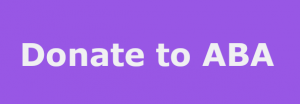We encourage skilled Re-homers to apply to take horses from the trapping program that is detailed below.

Kosciuszko National Park Wild Horse Management
Stakeholder Update, February 2021
You are receiving this email because you have registered your interest or been identified as a key stakeholder in wild horse management in Kosciuszko National Park. We appreciate your interest and involvement.
Post-bushfire control program
The Kosciuszko National Park post-bushfire wild horse control program has recommenced for 2021.
The summer 2019-2020 bushfires had a devastating impact on native wildlife throughout NSW. Control of wild horses in burnt areas and surrounding unburnt refuges continues as one of the many responses to support the long-term recovery of landscapes and native wildlife populations.
In Kosciuszko National Park, the impacts of wild horses include trampling fragile alpine and sub-alpine ecosystems, eroding waterways and destroying key habitat for threatened species such as the northern Corroboree frog and Stocky Galaxias fish.
In 2020, over 340 horses were removed from the park by passive trapping and re-homing from the Nungar Plain, Cooleman Plain and Kiandra Plain areas. This program will continue pending the finalisation of the new management plan.
NPWS has also removed over 3,000 feral pigs, deer, goats and foxes in 2020 as part of post-bushfire integrated pest animal control operations.
Animal welfare
NPWS continues to engage with the RSPCA and work closely with the Kosciuszko Wild Horse Scientific Advisory Panel (SAP) to ensure the highest possible animal welfare outcomes during control operations. The SAP includes members with expertise in animal welfare, veterinary science and pest animal management
Wild horses can foal at any time of the year. Heavily pregnant mares and mares with young foals are currently released from the trap yards back into the park.
A control program involving passive trapping and removal of wild horses from Kosciuszko National Park has been undertaken annually since 2002 (except for 2018 when control did not occur). Given the longevity of the program, NPWS staff have developed extensive experience in managing wild horses.
Except for injured or ill horses, the current control program does not involve shooting wild horses or other forms of euthanasia within traps or within the park.
Rehoming
NPWS is committed to finding suitable homes for as many horses as possible and 95 per cent of the horses removed so far during the post-bushfire control program have been rehomed. NPWS will only send horses to the knackery if suitable homes are not identified.
Currently 22 individuals or organisations have been approved as rehomers and the NPWS is currently appealing for more for 2021.
Control program outcomes*
(to 31 December 2020)
Program dates: 23 July to 15 December 2020
Number of trapping days: 37
Horses removed: 343
Horses rehomed: 325
Horses sent to knackery: 14
Total trapping-related deaths: 4
Horses released: 169
*Notes:
- The control program has temporarily ceased over the Christmas period and continues in 2021.
- Horses are released if they do not meet NPWS current criteria for removal due to transport limitations and includes heavily pregnant mares and mares with young foals
1 mare and 2 colts died in separate incidents while being held in the trap yards due to suspected head or neck injuries.1 mare died in the NPWS temporary holding yards due to a suspected head injury. No other horses were injured. Horse deaths in trap yards are a rare occurrence in the history of the trapping and removal program.
2020 spring wild horse population survey
Following community feedback and concerns about the impacts of the 2019-2020 bushfires, a new population survey of wild horses was undertaken in spring 2020 in Kosciuszko National Park only.
2020 spring survey results
The 2020 survey estimated 14,000 wild horses occur in the park despite severe drought and extreme bushfires. The survey confirms there are too many horses in Kosciuszko National Park and highlights the need for ongoing control measures to protect the alpine and sub-alpine regions.
As part of the post-bushfire response control program, NPWS is also conducting smaller-scale population surveys in the three identified management areas in the north of the park. These management area specific surveys will provide information to help correlate the relationship between environmental impact and wild horse numbers.
Together, the survey results will inform the publication a draft wild horse management plan, scheduled for the first half of 2021, that will set out how we will reduce the horse population to protect the park, while recognising the heritage values of the wild horses. The 2020 spring wild horse population survey report and summary are available on the Environment, Energy and Science website.
Kosciuszko Wild Horse Scientific and Community Advisory Panels
The advisory panels have completed their reports of advice to the Minister on the development of the wild horse heritage management plan.
Meetings and a site visit were recently held with the SAP and Community Advisory Panel (CAP) to discuss the methodology and design of the 2020 spring Kosciuszko National Park wild horse population survey. Summaries of all panel meetings are available on the Environment, Energy and Sciencewebsite
Wild horse heritage management plan
NPWS is working on compiling the draft wild horse heritage management plan. The reports of advice completed by the CAP and SAP are being used to help inform the draft plan.
Advice from Aboriginal stakeholders is also being considered in the new plan. Much of this advice comes from a recently completed study commissioned by NPWS that collected the views and opinions of Aboriginal stakeholders on wild horse management in the park. Public comment will be sought on the draft plan during public exhibition planned for the first half of 2021.
Respectful engagement
Many individuals and groups across the community have strong, passionate views about the best ways to manage wild horses in Kosciuszko National Park.
Community input and informed and respectful debate is always welcome. Unfortunately, in the past, some people have expressed views and opinions on wild horses to NPWS staff in ways that are not respectful, productive or in line with acceptable community standards. A zero-tolerance approach will be taken to any interactions, correspondence, or phone calls that are considered harassing or threatening. Comments, queries or requests for information about wild horse management should be directed to np*************@*****************ov.au and a response will be provided as soon as possible. We look forward to hearing from you.






